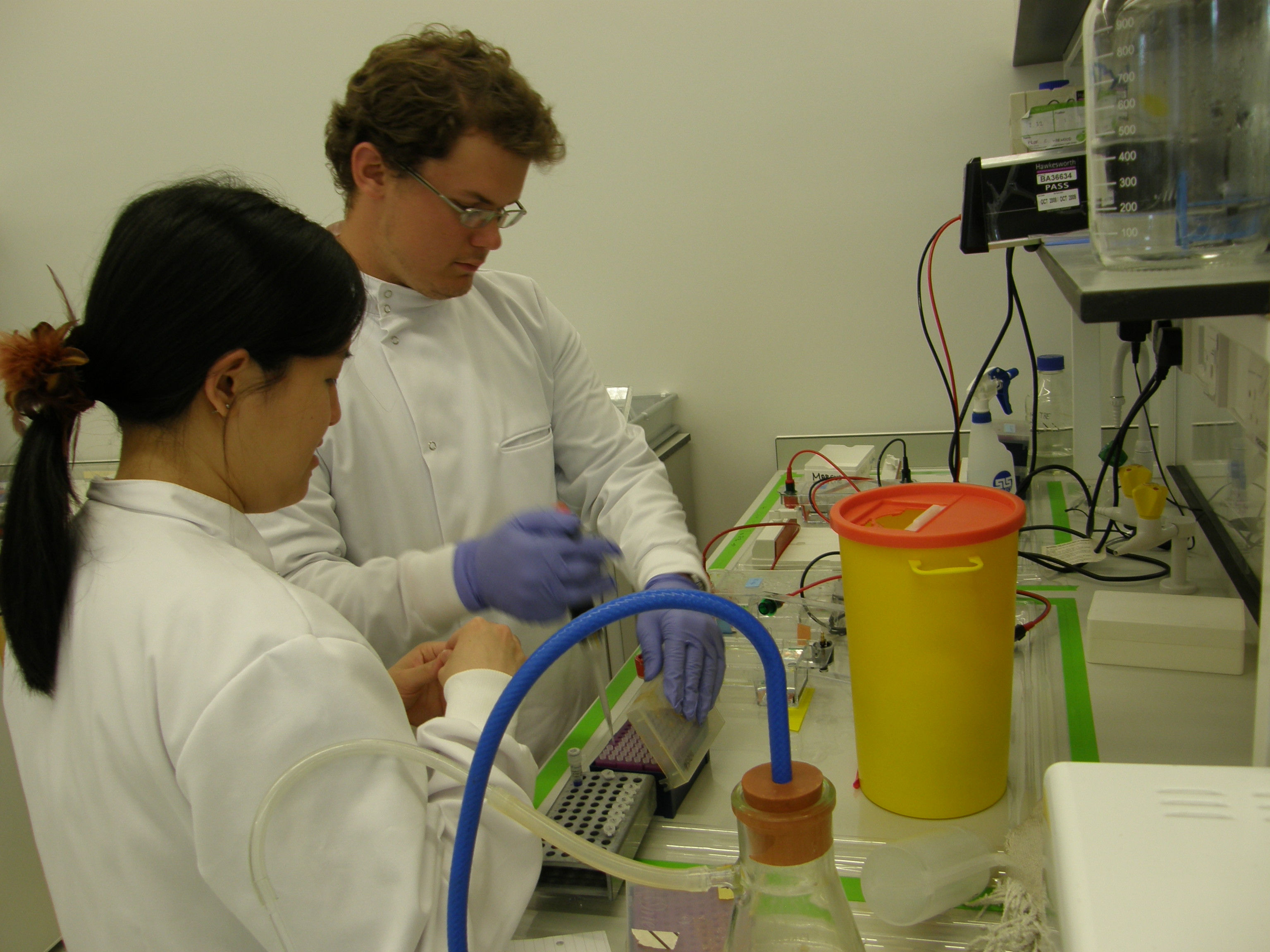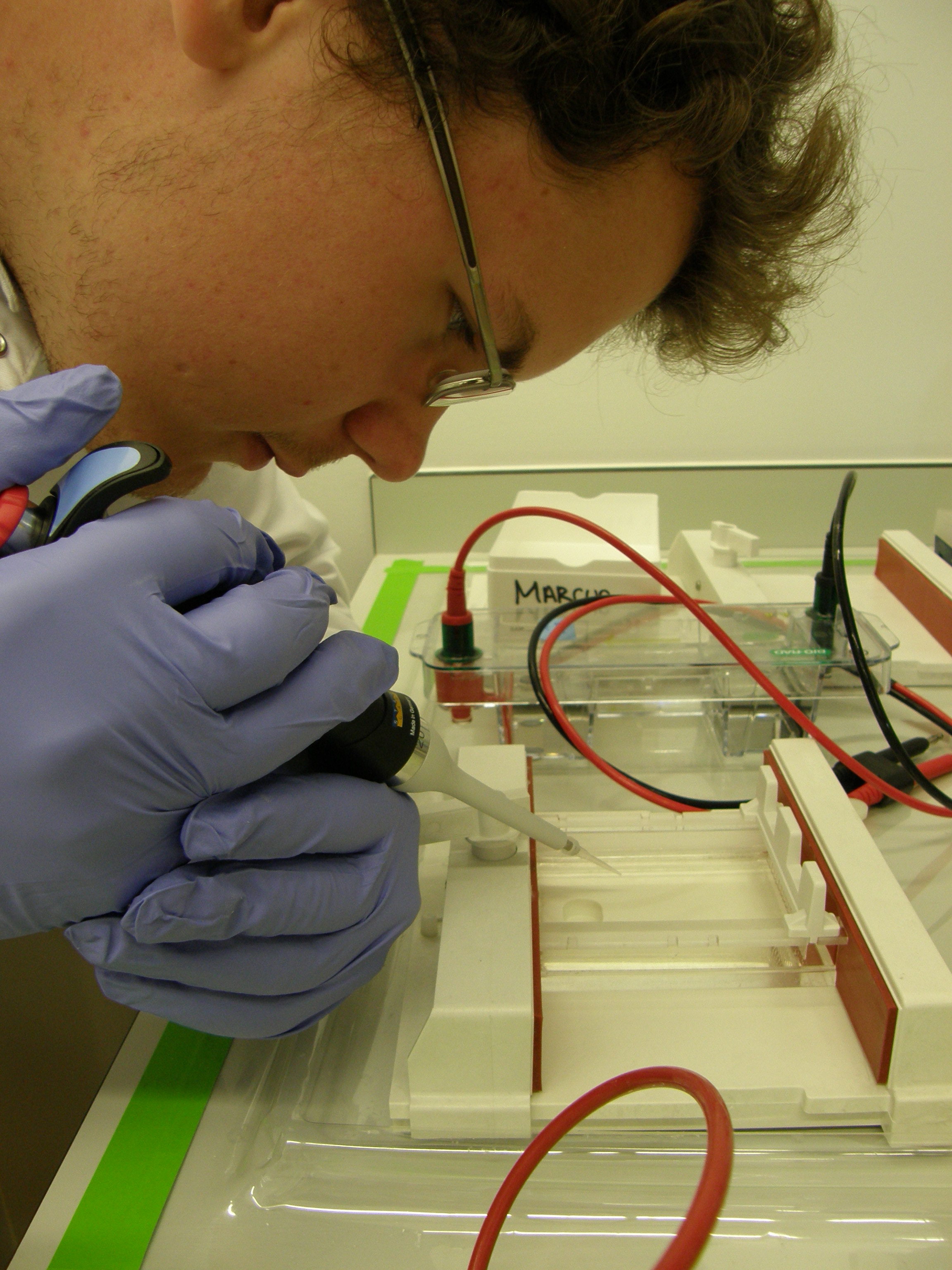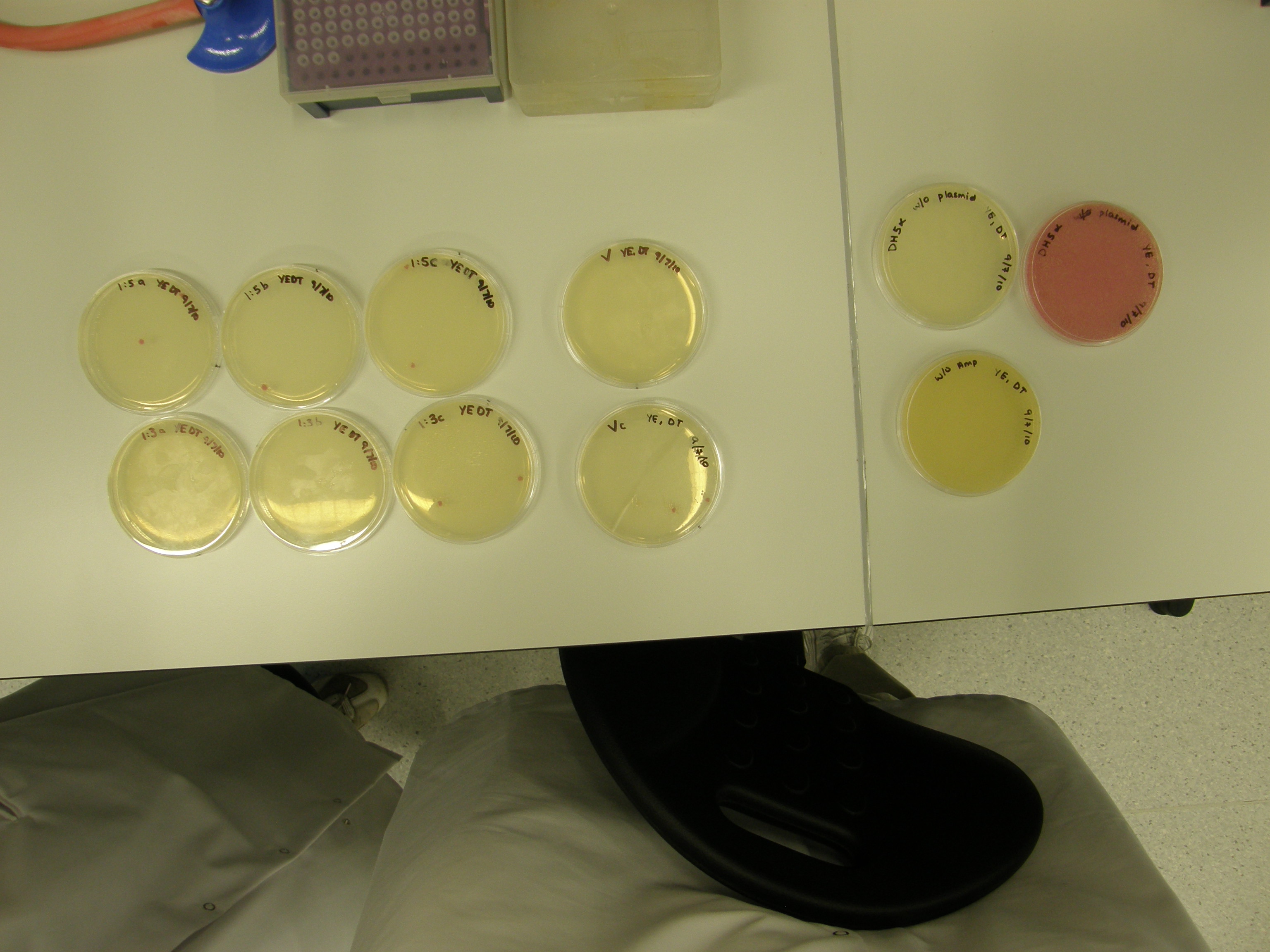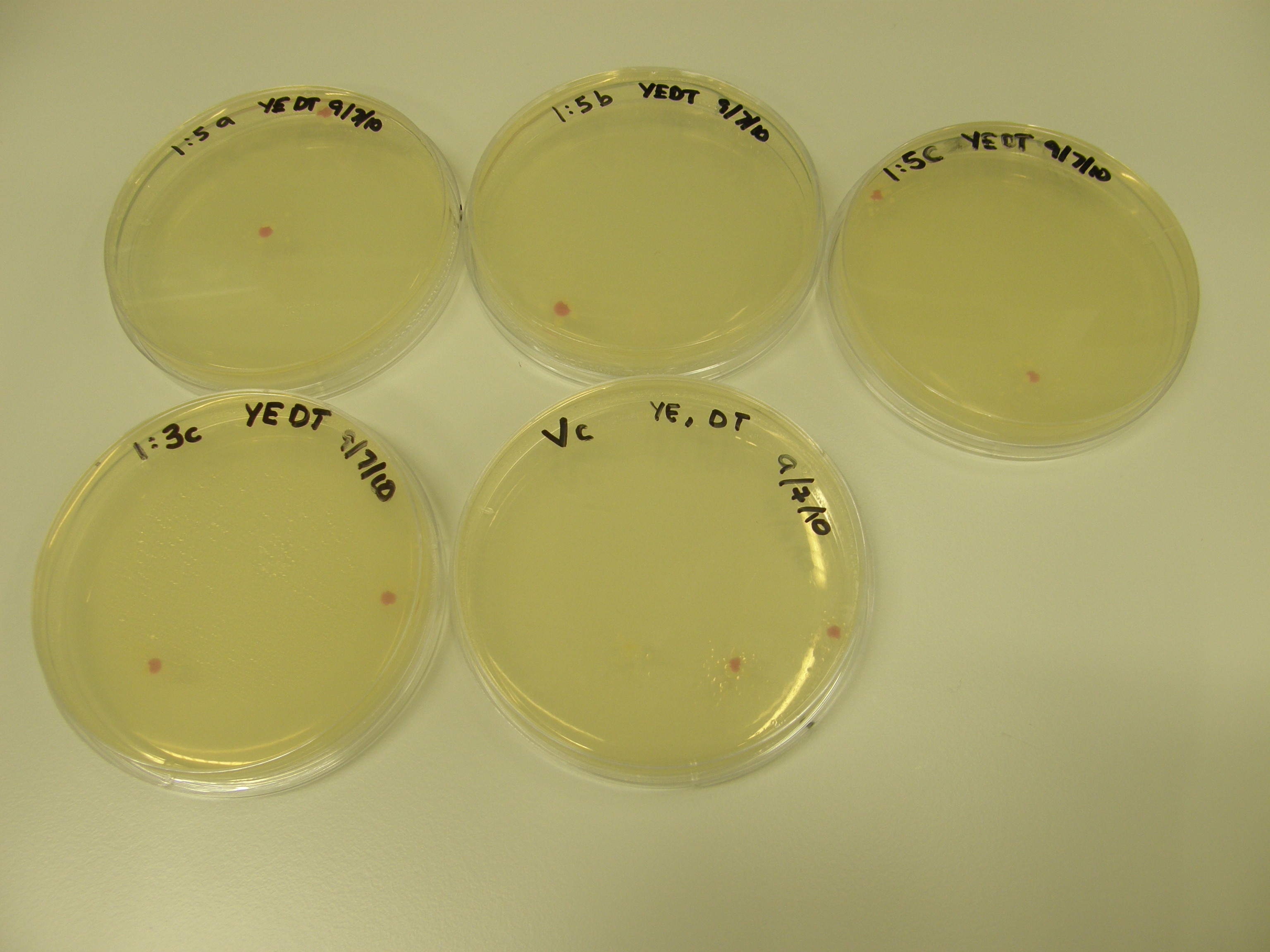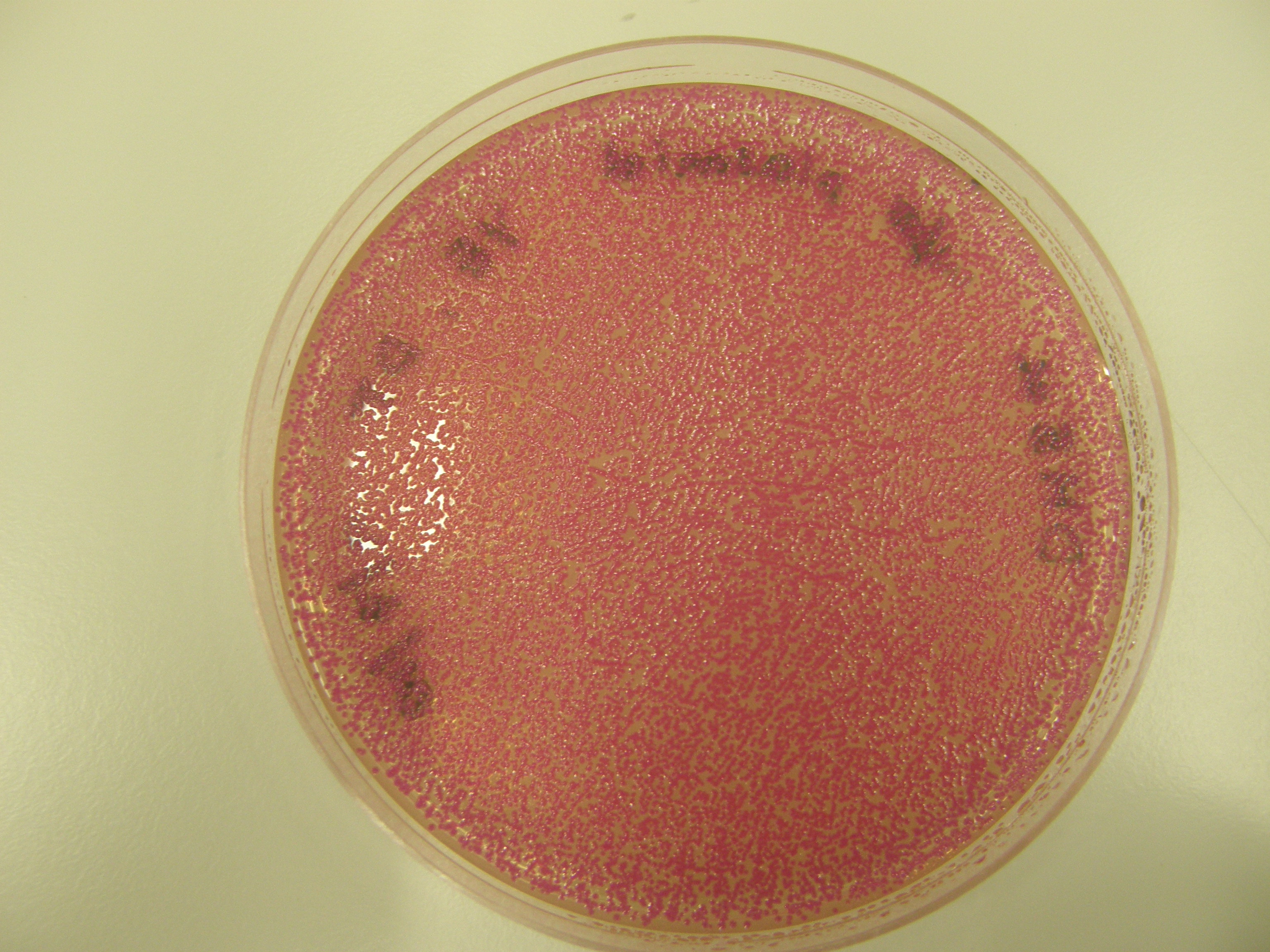Team:Newcastle/12 July 2010
From 2010.igem.org
RachelBoyd (Talk | contribs) (→Results) |
Shethharsh08 (Talk | contribs) |
||
| Line 1: | Line 1: | ||
{{Team:Newcastle/mainbanner}} | {{Team:Newcastle/mainbanner}} | ||
| - | |||
| - | |||
=LacI BioBrick Construction= | =LacI BioBrick Construction= | ||
Revision as of 14:39, 25 October 2010

| |||||||||||||
| |||||||||||||
Contents |
LacI BioBrick Construction
Aims
To use PCR to extract lacI (promoter, ribosome-binding site (RBS) & coding sequence (CDS)) from plasmid pMutin4 and ligate into vector pSB1AT3 in front of red fluorescent protein (RFP).
Summary:
- Colony PCR
- Streak plate
- Minipreps
Materials
- PCR reagents
- LB plus ampicillin plates
Protocols
Colony PCR
Colony PCR is a rapid way to check if the desired sequence is now present in the vector.
7 colonies were selected for screening by colony PCR and Streak plating.
A Positive control was performed to ensure that the PCR was working correctly
The quantities for the PCR are as follows:
Please refer to PCR. The melting temperature, Tm, of this experiment is 54°C.
Note We used 1 minute of extension time because the size of lacI is 1.4kb.
Results
No bands were observed from the seven test colonies, the positive control worked correctly.
Note There are 2 possible reasons for red colonies formed:
- partial digest - rejoins without insert
- with insert
We need to tell the difference between the two.
Spread Plates
Overnight culture
The seven colonies that grew on the plates were cultured overnight. The protocol for growing an overnight culture was followed.
Tommorrow
We are going to take one of the colonies that have worked and possibly a whole plasmid prep.
 
|
 "
"
